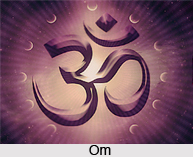Indian Philosophy and Hinduism are intricately related to each other. Hinduism is a vast concept which is traditionally divided into six schools of thoughts. These are also known as astika and include Samkhya, Yoga, Nyaya, Vaisheshika, Mimamsa and Vedanta which consider Vedas as the supreme texts. Gupta period was known as the `golden age` of Hinduism. With the disappearance of Mimamsa and Vaisheshika Philosophy in the Middle Ages, various sub schools of Vedanta began to be prominent in the religious philosophy. With time Samkhya Philosophy school gradually started loosing its status and its followers got absorbed in Vedanta and Yoga. Nyaya school of thought however survived till 17th century.
 Samkhya
Samkhya
The oldest philosophical system in Hinduism is Samkhya. According to Samkhya, Parusa is the term given to consciousness. Due to ignorance, it is often believed that Parusa is the manifestation of elements of Prakriti like ego and intellect, which may result in suffering. Freedom of soul can be achieved with the realisation that Parusa is completely distinct from Prakriti.
Yoga
Yoga is another school of thought in Hinduism. Yoga has deep association with Samkhya school. However, Patanjali illustrates this school as more theist that accepts psychology and metaphysical concepts of Samkhya school. Yoga Sutra of Patanjali is the foundational texts of this school. Hinduism has propounded seven branches of Yoga viz. Jnana yoga, Mantra yoga, Raja yoga, Karma yoga, Bhakti yoga, Tantra yoga and Hatha yoga.
Nyaya
Nyaya Sutra laid the foundation of Nyaya. Aksapada Gautama, in sixth century BCE was the writer of Nyaya Sutras. The methodology of Nyaya is its most important contribution which is based on the system of logic. Majority of Indian schools are based on this very methodology. The followers of this school believed that gaining knowledge is the only way of escaping from sufferings. A lot of effort had been put to identify the right source of knowledge. Four sources of knowledge had been identified as perception, inference, comparison, and testimony.
Vaisheshika
A sage named Kanada was the founder of this Vaisheshika School. Vaisheshika postulates that all the objects of this universe are reducible to some kind of atoms. The fundamental force that evokes consciousness in these atoms is Brahman. Origin of Vaisheshika had been independent of Nyaya but eventually they merged in course of time owing to their closely related theories. The major difference between these schools lies in the source of knowledge. Unlike Nyaya, Vaisheshika believes in two sources viz. perception and inference.
Purva Mimamsa Philosophy
Purva Mimamsa had a major contribution in the philosophy of Hinduism. It established the authority of the Vedas and formulated the rules for its interpretation. Philosophers of this school however had accepted the philosophical and logical teachings of other schools of thought. However they believed that the concept of salvation in other schools of thought did not allow the freedom from selfishness and desire. Philosophy of Mimamsa states that salvation can be achieved by acting according to the prescriptions of the Vedas.
Vedanta
Upanishads laid the foundation of Vedanta. This school of thought focuses on Vedic cosmology, philosophy and hymns. The major contribution of Vedanta school lies in the idea that self consciousness is indistinguishable and constant with the consciousness of Brahman. Vedanta is categorized in six sub schools each of which interprets the texts in its own unique way.
Indian philosophy and Hinduism are closely intertwined and has directed the society in many ways. They have a great contribution in shaping up the philosophy and religious set up of India.









